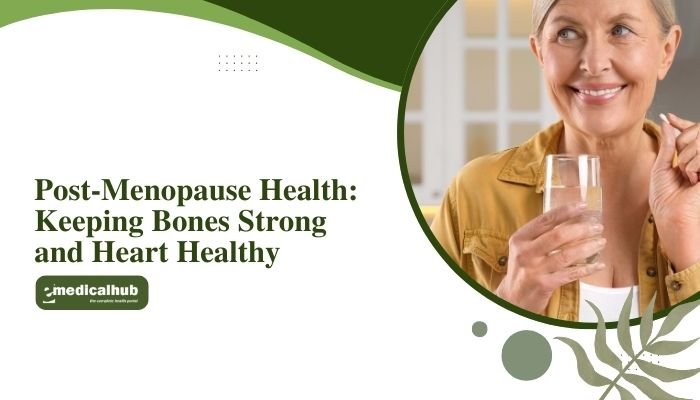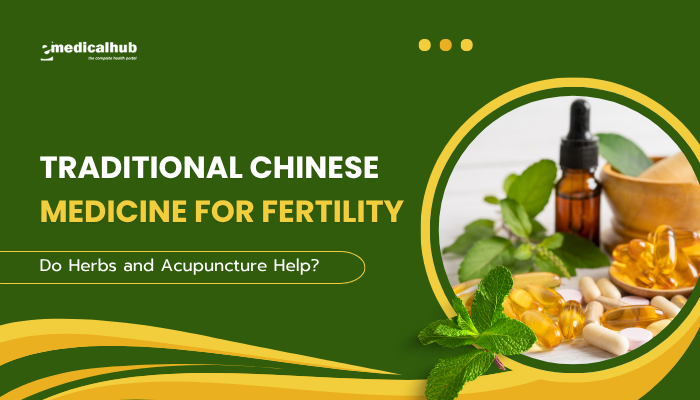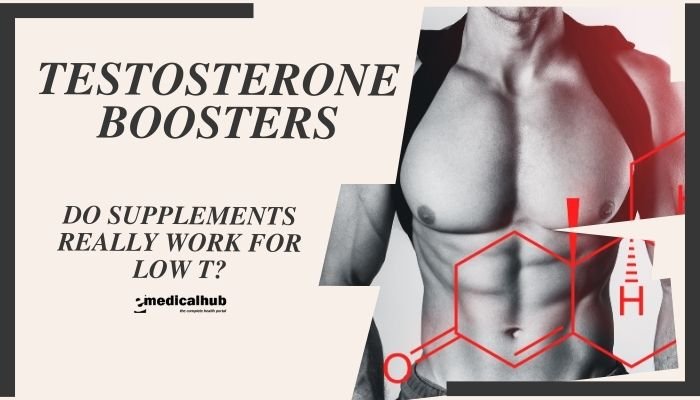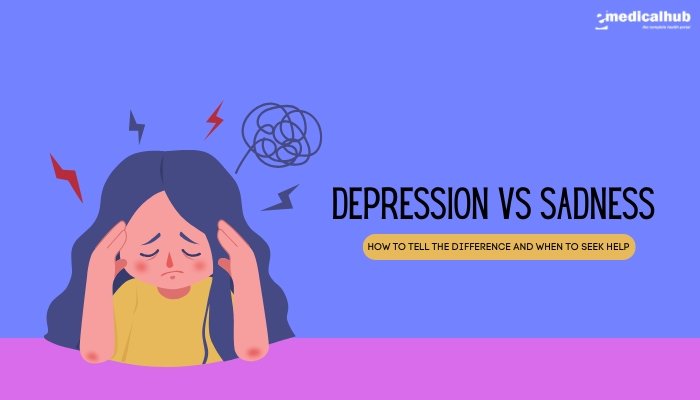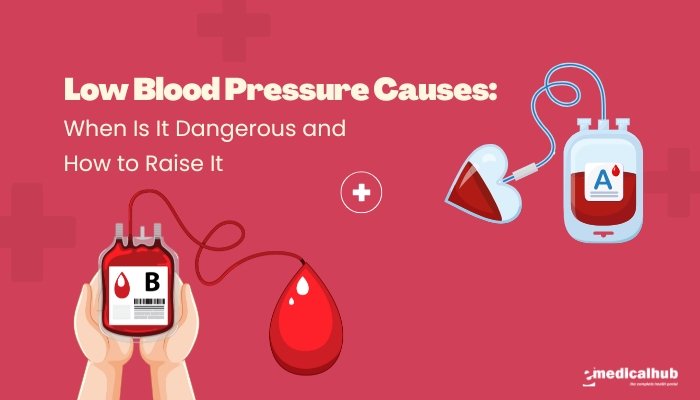Introduction
Menopause marks the end of a woman’s reproductive years. Generally defined as occurring 12 months after the final menstrual period, menopause brings significant hormonal shifts—primarily the drop in estrogen levels.
This transition not only halts monthly cycles but also affects long-term health in ways that are especially noticeable after menopause. Low estrogen can compromise bone density and increase the risk for osteoporosis, while also influencing lipid metabolism, blood pressure, and other cardiovascular factors.
Post-menopause is typically the period following menopause, often spanning several decades of a woman’s life. During this stage, focusing on preventive care, balanced nutrition, and regular physical activity is paramount.
By addressing bone health and cardiovascular well-being head-on, women can optimize their quality of life and reduce the likelihood of conditions like osteoporosis, heart disease, and stroke. This article examines the key changes that occur after menopause, the reasons behind the heightened bone and heart risks, and evidence-based strategies to preserve vitality in the years ahead.
Understanding Post-Menopause
Menopause vs. Post-Menopause
- Menopause: Officially recognized after 12 months without a menstrual period. Typically occurs in the late 40s to early 50s for most women, though it can vary.
- Perimenopause: The transition phase leading up to menopause. Hormone levels (especially estrogen and progesterone) fluctuate significantly, causing irregular cycles and menopausal symptoms such as hot flashes or mood changes.
- Post-Menopause: The stage following menopause, lasting the remainder of a woman’s life. Hormonal levels remain relatively low; no further menstrual cycles occur.
Hormonal Shifts and Their Impacts
- Estrogen Decline: Estrogen exerts protective effects on bones (slowing bone resorption) and influences cholesterol metabolism. After menopause, insufficient estrogen can accelerate bone loss and allow LDL (“bad”) cholesterol to rise, among other changes.
- Progesterone: Typically negligible post-menopause. However, in hormone therapy contexts, progesterone or progestin may be used to protect the uterus (if still present) from unopposed estrogen.
- Androgens: Levels (e.g., testosterone) also change, but those fluctuations are less impactful on bone and cardiovascular health than estrogen deficiency.
Primary Health Concerns in Post-Menopause
- Osteoporosis and Bone Fractures: Thinning bones increase the risk of fractures—especially of the hip, wrist, and spine.
- Cardiovascular Disease: Coronary artery disease and stroke risk typically rise after estrogen’s vascular protections diminish.
- Body Composition: Women often experience an uptick in central (abdominal) fat, which correlates with metabolic syndrome.
- Genitourinary Changes: Vaginal dryness, painful intercourse, and urinary issues can also occur but are less directly linked to bone or heart health.
- Mental Health: Shifting hormones, midlife stressors, and concerns about aging can intersect with physical changes, so well-rounded support is crucial.
Bone Health After Menopause
Osteoporosis: A Silent Threat
- Definition: Osteoporosis is characterized by low bone mass and structural deterioration, increasing fracture likelihood.
- Prevalence: Approximately 1 in 3 women over 50 experience osteoporotic fractures worldwide.
- Role of Estrogen: In reproductive years, estrogen helps slow bone breakdown. Post-menopause, bone resorption outpaces bone formation, accelerating net bone loss.
Risk Factors for Post-Menopausal Osteoporosis
- Age: Risk escalates with advancing age.
- Genetics/Family History: Having a parent or sibling with osteoporosis raises susceptibility.
- Low Peak Bone Mass: Women who had suboptimal bone density in early adulthood face higher risk after menopause.
- Lifestyle: Sedentary habits, smoking, high alcohol intake, and poor nutrition hamper bone maintenance.
- Certain Medications: Prolonged steroid use, some anti-epileptics, or proton pump inhibitors can negatively affect bone.
- Body Frame: Thinner women (low BMI) often have less bone mass reserve.
Common Fracture Sites
- Hip: Hip fractures often lead to prolonged recovery, potential disability, and even increased mortality among older adults.
- Spine (Vertebrae): Compression fractures can manifest as loss of height or a curved spine (kyphosis).
- Wrist: Falls on outstretched hands can easily fracture the radius.
Diagnostic Tools for Bone Health
- DXA Scan (Dual-Energy X-ray Absorptiometry): The gold standard for measuring bone mineral density (BMD). Typically recommended for women 65+ or younger with risk factors.
- FRAX Score: A tool developed by the WHO that estimates a 10-year fracture risk based on BMD, age, sex, weight, smoking status, etc.
- Other Markers: Biochemical markers of bone turnover (e.g., serum CTX, P1NP) can help track therapy response or bone metabolic activity.
Interventions to Maintain Bone Strength
- Calcium and Vitamin D: Sufficient dietary calcium (1,200 mg/day recommended for women over 50) and vitamin D supplementation to reach recommended serum levels.
- Weight-Bearing Exercise: Activities like brisk walking, hiking, dancing, or tennis. Resistance training (weights, elastic bands) also helps maintain or gain bone mass.
- Healthy Diet: Emphasizing protein, fruits, vegetables, and minerals like magnesium and phosphorus.
- Avoiding Bone-Damaging Habits: Quitting smoking and moderating alcohol intake.
- Pharmacotherapy: For those diagnosed with osteoporosis, medications such as bisphosphonates (alendronate, risedronate), denosumab, selective estrogen receptor modulators (SERMs), or parathyroid hormone analogs may be indicated.
- Hormone Therapy: Post-menopausal estrogen-progestin therapy can reduce bone loss. However, overall benefits and risks must be considered with a doctor.
Cardiovascular Health in Post-Menopause
Why Heart Disease Risk Rises Post-Menopause
- Protective Role of Estrogen: During reproductive years, estrogen supports beneficial HDL levels, modulates vascular reactivity, and reduces atherogenic changes.
- Lipid Changes: After menopause, LDL (“bad”) cholesterol typically climbs, HDL might dip, and total cholesterol often rises.
- Blood Pressure Trends: Hypertension becomes more prevalent as vascular elasticity decreases.
- Increased Inflammation and Insulin Resistance: Abdominal weight gain can worsen metabolic factors, raising heart disease and type 2 diabetes risk.
Recognizing Coronary Heart Disease (CHD) in Women
- Different Presentation: Women may have atypical symptoms like jaw pain, fatigue, or back pain instead of the classic chest pain.
- Silent Ischemia: Women are at risk for under-diagnosis of silent heart disease.
- Heart Failure and Stroke: The stroke risk surges with uncontrolled hypertension, while heart failure can develop from chronic pressure overload.
Key Risk Factors for CVD After Menopause
- Hypertension and Dyslipidemia: Elevations in blood pressure and detrimental lipid profiles.
- Obesity: Particularly central (visceral) adiposity.
- Diabetes: Women with diabetes face a more significant jump in cardiovascular events.
- Sedentary Lifestyle: Lack of exercise heightens metabolic syndrome.
- Smoking: Greatly accelerates arterial damage.
Screening and Monitoring
- Blood Pressure Checks: Regular monitoring, at least annually, or more if borderline or hypertensive.
- Lipid Panels: Evaluate LDL, HDL, triglycerides, especially after menopause.
- Blood Glucose or HbA1c: Identifying prediabetes or diabetes is crucial.
- Coronary Artery Calcium (CAC) Score: In selected cases, imaging can quantify plaque burden, refining risk stratification.
Strategies to Safeguard Heart Health
- Balanced Diet: Emphasize fruits, vegetables, whole grains, fish or lean meats, and moderate healthy fats (Mediterranean-style approach).
- Physical Activity: At least 150 minutes/week of moderate-intensity or 75 minutes/week of vigorous-intensity exercise plus strength training.
- Weight Management: Even small weight loss can beneficially affect blood pressure and lipids.
- Blood Pressure Control: Lifestyle plus medication if necessary (ACE inhibitors, ARBs, diuretics, beta-blockers).
- Cholesterol-Lowering: Statins for those with elevated LDL or significant risk.
- Stress Reduction: Chronic stress can worsen inflammatory and metabolic markers, so mindfulness and relaxation techniques are beneficial.
Hormone Therapy and Its Role
What Is Hormone Therapy?
Hormone Therapy (HT), often called Hormone Replacement Therapy (HRT), involves giving post-menopausal women estrogen alone (if they have no uterus) or combined with progestin (if the uterus is intact) to alleviate menopausal symptoms (e.g., hot flashes, vaginal dryness) and reduce bone loss.
Benefits and Risks for Bone
- Bone Preservation: HT can slow or stop post-menopausal bone density decline, cutting fracture risk.
- Fracture Reduction: Studies show fewer hip and vertebral fractures in HT users, provided therapy is continued.
- Concerns: Potential heightened risk of blood clots (deep vein thrombosis), stroke, or breast cancer (especially with combined therapy). Dosage, timing, and individual risk factors matter significantly.
Cardiovascular Considerations
- The “Timing Hypothesis”: Starting HT near menopause (before age 60 or within 10 years of menopause onset) might yield some protective cardiovascular effects.
- Risks: Initiating HT later might not carry the same advantage and could raise risk of coronary events in older individuals.
- Personalized Decision: Evaluate family history, personal risk factors, and severity of menopausal symptoms in consultation with an experienced clinician.
Alternatives to Hormone Therapy
For those who prefer to avoid systemic hormones or have contraindications:
- Low-dose vaginal estrogen: Helps localized genitourinary symptoms without substantial systemic effects.
- SERMs: E.g., Raloxifene can prevent bone loss and reduce breast cancer risk, but might not alleviate vasomotor symptoms.
- Non-Hormonal Meds: SSRIs, SNRIs, or gabapentin for hot flashes.
Nutrition and Diet Tips
Balanced Macro- and Micronutrient Intake
- Protein: Vital for muscle and bone preservation. Aim for around 0.8–1.2 g per kg body weight daily. Lean meats, fish, eggs, legumes, and low-fat dairy are good sources.
- Calcium: 1,200 mg daily recommended for post-menopausal women. Sources: Low-fat dairy, kale, broccoli, fortified cereals.
- Vitamin D: A minimum of 600–800 IU per day is often recommended, though many clinicians advise 1,000–2,000 IU for older adults with deficiency or limited sun exposure.
- Magnesium, Phosphorus, Potassium: Contribute to overall bone mineral support and electrolyte balance.
Heart-Friendly Approach
- Restrict Saturated/Trans Fats: Choose olive oil, avocados, nuts for healthier fats.
- Whole Grains: High fiber cereal and bread for stable blood sugar and cholesterol regulation.
- Fruits & Vegetables: Provide antioxidants and vitamins which can reduce inflammation and support vascular function.
- Sodium Moderation: Keep intake under 2,300 mg/day or lower if hypertensive.
Avoiding Crash Diets or Deficiencies
- Stable Weight Loss: If overweight, aim for gradual reduction. Rapid diets can sap bone mass and nutrient reserves.
- Consult a Dietitian: For personalized meal plans, especially if dealing with multiple conditions like diabetes or chronic kidney disease.
Physical Activity Recommendations
Weight-Bearing and Resistance Exercises
- Examples: Walking, hiking, elliptical training, or dancing place stress on bones, encouraging new bone growth.
- Strength Training: Lifting weights or using resistance bands about 2–3 times a week helps maintain muscle mass and bone density.
Aerobic Cardio for Heart Health
- Moderate-Intensity: Brisk walking, cycling, or swimming at least 30 minutes a day, five days a week.
- Interval Training: More intense intervals can further improve cardiovascular fitness if medically cleared.
Flexibility and Balance
- Yoga or Tai Chi: Enhances joint range, posture, and fall prevention.
- Core Strength: Reduced risk of spinal issues or back pain, indirectly protecting bone health.
Safety Considerations
- Low Impact Variation: For those with joint pain or advanced osteoporosis, lower-impact routines reduce fracture risk.
- Gradual Progression: Beginners or older adults with health issues should start slowly, possibly working with a physical therapist or certified trainer.
Supplements and Alternative Approaches
Calcium and Vitamin D
- Core Supplements: If diet alone isn’t meeting recommended daily values.
- Vitamin D Status: Many older adults have deficiency. Blood tests can guide dosing.
Omega-3 Fatty Acids
- Cardiovascular Aid: Found in fatty fish (salmon, mackerel) or taken as fish oil supplements. Some evidence suggests a mild beneficial effect on cholesterol and triglycerides.
- Inflammation: Potentially dampens systemic inflammation, though results vary across studies.
Herbal and Phytoestrogen Supplements
- Soy Isoflavones: Contain phytoestrogens which might help with mild menopausal symptoms, although the effect on heart or bone health is less robust than standard therapies.
- Black Cohosh, Red Clover: Common for vasomotor symptom relief, but data are inconclusive about bone or cardiac advantages.
- Safety: Herbal treatments can interact with medications. Always consult a professional.
Mind-Body Therapies
- Meditation and Stress Relief: Chronic stress can worsen heart risk factors and hamper compliance with healthy lifestyles.
- Acupuncture: Some anecdotal benefits for hot flashes or joint pains. Not a direct bone or cardiovascular therapy but may support overall comfort.
Addressing Emotional Well-Being and Body Image
Impact of Midlife Changes
- Psychological Strain: Weight gain, hot flashes, or uncertainty about health can weigh on mental well-being.
- Self-Esteem: Shifting body composition or loss of bone density can spark negative body image. Encouragement and positive reinforcement help sustain motivation.
Stress Management
- Connection to Cortisol: Chronic emotional stress might aggravate risk factors for osteoporosis and heart disease.
- Techniques: Guided relaxation, mindful breathing, or journaling can reduce harmful stress responses.
Social Support Networks
- Friends/Family: Emotional backing, shared cooking or exercise routines enhance adherence to healthy behaviors.
- Support Groups: Online communities or local meetups for post-menopausal women can offer tips, empathy, and accountability.
Medical Checkups and Screening Protocols
Regular Health Assessments
- Bone Density (DXA): Typically recommended at least once around age 65 or earlier if risk factors exist. Repeats depend on baseline results.
- Mammograms and Cervical Screening: Continue as recommended for age and risk to rule out other health issues.
- Cardiac Evaluations: Periodic cholesterol panels, blood pressure checks, EKGs if indicated by symptoms or risk level.
Talking to Your Doctor
- Medication Revisit: If on hormone therapy, bisphosphonates, or statins, regularly discuss side effects or dosage adjustments.
- Vitamin Levels: Checking D, B12, and iron can help adjust supplementation.
- Menopausal Symptom Management: Don’t overlook persistent hot flashes or vaginal dryness, which can be treated. Comprehensive comfort supports mental health, too.
Potential Pitfalls and How to Overcome Them
Inconsistency in Lifestyle Changes
- Solution: Set realistic goals, track progress, and seek accountability partners.
- Reward System: Celebrate small successes (e.g., consistent daily walks for a month).
Negative Mindset or Overwhelm
- Solution: Approach changes in incremental steps (e.g., adding short exercise sessions, gradually improving diet).
- Seek Therapy: Cognitive-behavioral strategies to reframe challenges as manageable tasks.
Discontinuing Medications Early
- Solution: Communicate side effects to your doctor before quitting. Adjusting dosage or trying alternatives can prevent abrupt cessation.
- Understanding Duration: Osteoporosis drugs, for instance, may need years of consistent use to see maximum fracture reduction.
Underestimating the Importance of Checkups
- Solution: Mark screening appointments in your calendar. Buddy up with a friend who also needs routine tests.
- Emphasize Prevention: Knowing a friend or family member with a bone fracture or heart event can highlight the significance of staying proactive.
Long-Term Outlook: Hope and Future Research
Emerging Therapies for Bone Preservation
- Anabolic Agents: Newer drugs stimulating bone formation, e.g., abaloparatide, romosozumab.
- Gene and Molecular Research: Investigating how to harness the body’s regenerative pathways or manipulate sclerostin for bone growth.
Cardiovascular Innovations
- Better Risk Stratification: Tools that factor in female-specific risk factors (like early menopause or pre-eclampsia) for more personalized prevention.
- Novel Lipid-Lowering Agents: Beyond statins (PCSK9 inhibitors), which might be valuable for older women with persistent risk.
The Holistic Approach
- Integrated Care: Recognizing the synergy between bone, heart, and overall well-being.
- Lifestyle Tech: Wearable devices for tracking daily steps, heart rate, or posture can help older adults maintain active habits.
Conclusion
Post-menopause can usher in a new chapter of life, often marked by wisdom, freedom from monthly cycles, and new opportunities. However, it also brings changes in hormonal balance that can alter bone density and cardiovascular health. Left unchecked, decreased estrogen can hasten osteoporosis, while also raising the risk of heart disease. Through consistent monitoring, balanced nutrition (including adequate calcium, vitamin D, and protein), and regular exercise—especially weight-bearing and aerobic regimens—women can significantly mitigate these risks.
Hormone therapy may be considered for short-term relief of bothersome menopausal symptoms and bone health maintenance, but it carries its own set of pros and cons, requiring a personalized approach. Non-hormonal measures, from medication to stress management, play complementary roles. Above all, maintaining open lines of communication with healthcare providers, undergoing recommended screenings, and embracing a sustainable, healthful lifestyle fosters resilient bones, a robust heart, and a vibrant quality of life throughout post-menopause.
References
- North American Menopause Society (NAMS). Management of osteoporosis in postmenopausal women. Menopause. 2021;28(8):772-793.
- International Osteoporosis Foundation. Facts and statistics about osteoporosis and its impact. IOF website. 2022.
- Sànchez-Rodríguez MA, Zacarías-Flores M, Castrejón-Delgado L, et al. Cardiovascular risk factors in postmenopausal women. J Womens Health (Larchmt). 2019;28(4):543-553.
- Rossouw JE, Anderson GL, Prentice RL, et al. Risks and benefits of estrogen plus progestin in healthy postmenopausal women. JAMA. 2002;288(3):321-333.
- Nuti R, Brandi ML, Checchia G, et al. Guidelines for the management of osteoporosis and fragility fractures. Intern Emerg Med. 2019;14(1):85-102.
- Mosca L, Barrett-Connor E, Wenger NK. Sex/gender differences in cardiovascular disease prevention. Circulation. 2011;124(19):2145-2154.
- Kanis JA, Johansson H, Oden A, et al. A family history of fracture and fracture risk: a systematic review and meta-analysis. Bone. 2018;116:69-75.
- Zhao R, Xu Z, Zhao M. Modulation of bone and bone marrow niche by exercise. Front Physiol. 2020;11:333.
- Manson JE, Chlebowski RT, Stefanick ML, et al. Menopausal hormone therapy and health outcomes during the intervention and extended poststopping phases of the Women’s Health Initiative randomized trials. JAMA. 2013;310(13):1353-1368.
- Qaseem A, Forciea MA, McLean RM, Denberg TD. Treatment of low bone density or osteoporosis to prevent fractures in men and women. Ann Intern Med. 2017;166(11):818-839.
- Bairey Merz CN, Johnson BD, Sharaf BL, et al. Hypoestrogenemia of menopause and coronary disease in women. Curr Diab Rep. 2016;16(1):102.
- Crandall CJ, Hovey KM, Andrews CA, et al. Breast, endometrial, and ovarian cancer risk with menopausal hormone therapy in the Women’s Health Initiative trials. JAMA Oncol. 2020;6(2):227-239.
- U.S. Department of Health and Human Services. Physical Activity Guidelines for Americans. 2nd ed. Washington, DC: US DHHS; 2018.
- Eastell R, Rosen CJ, Black DM, et al. Pharmacological management of osteoporosis in postmenopausal women. Lancet Diabetes Endocrinol. 2019;7(7):513-526.

